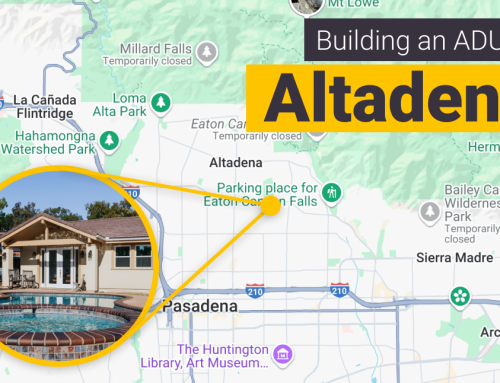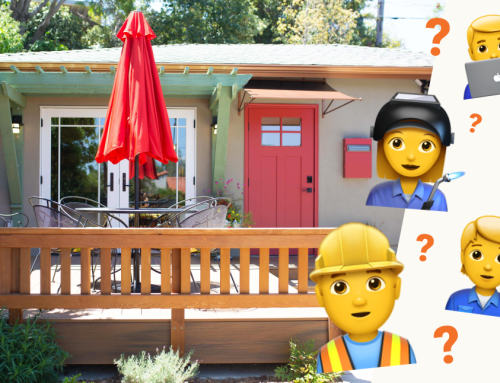What qualifies as an Accessory Dwelling Unit?
An accessory dwelling unit (ADU) is an additional housing structure built on a property that already has a residence. They’re also referred to as granny flats, guest houses, casitas, or in-law suites. ADUs can be built on lots with a single-family house, duplex, or multi-family residence (like an apartment complex), and even on lots with more than one detached home.
An accessory dwelling unit has its own entrance separate from the primary house, as well as a kitchen, bathroom, and living space.
ADUs are different from tiny homes in that they are permanent structures. In many states, tiny homes are mobile: they’re on wheels, even if you plan on leaving them in your backyard for years.
Maxable is your one-stop-shop for planning and managing your accessory dwelling unit project. We match you with designers and builders ideal for your project and research your property so you can make educated decisions every step of the way.
What is an accessory dwelling unit? There are 5 main types
Detached stand-alone Accessory Dwelling Unit
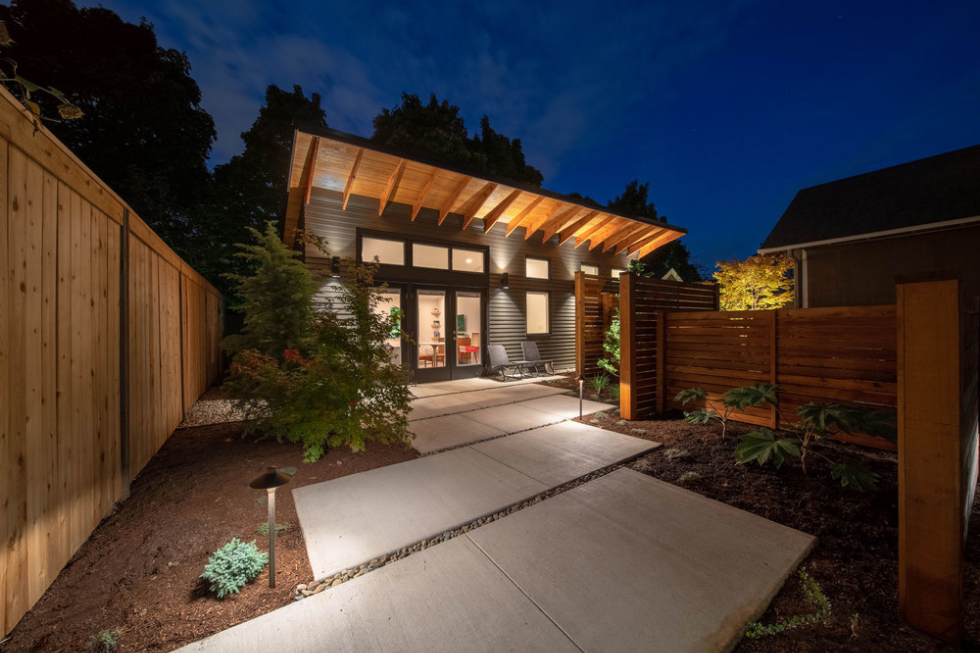
Designed by Propel Studio
These are separate from the main house and usually situated in the backyard. Your state and city will have rules about the unit’s minimum and maximum square footage, and whether or not it can be more than one story.
Garage conversion
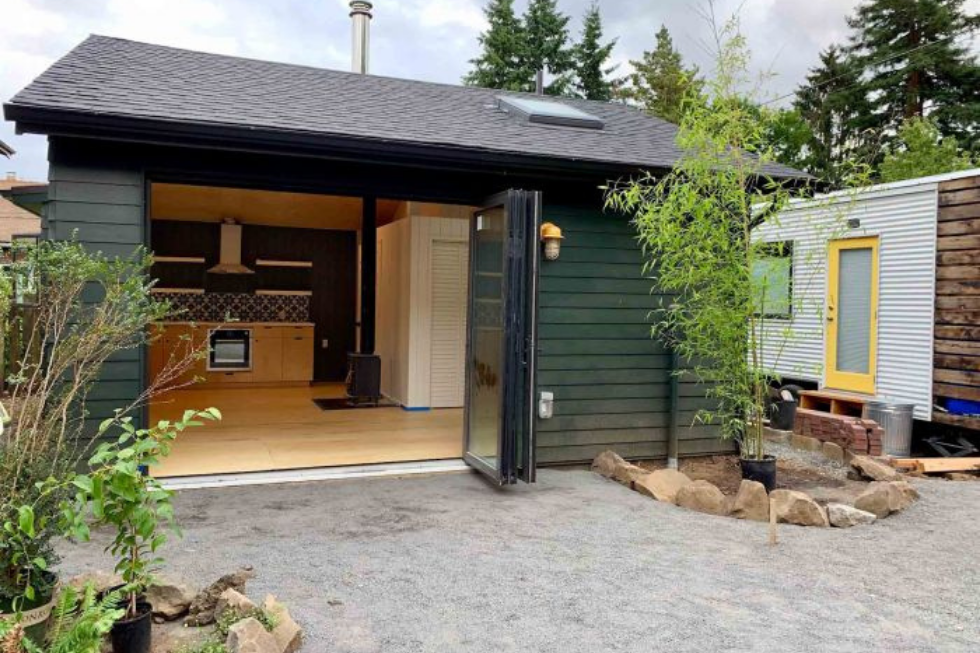
Designed by Becca Ayon
You can convert your garage to an accessory dwelling unit and either keep it the size of the garage or expand it beyond that footprint. For inspo, see 37 Garage Conversion Ideas You’ll Drool Over.
Over-garage Accessory Dwelling Unit
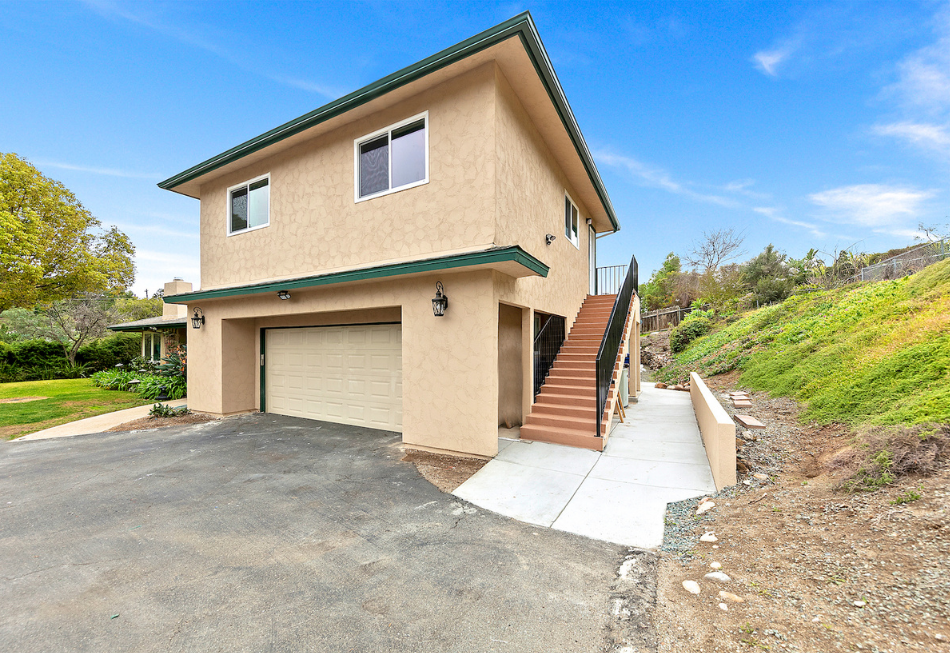
Designed by Metro D&C Group
These accessory dwelling units are a popular option when homeowners don’t want to lose the garage and can afford to build over it. They are more expensive than a garage conversion. Get details at Granny Flat Over the Garage: Is it Right for you?
Attached Accessory Dwelling Unit

Attached to the main structure, these ADUs are sometimes wholly or partly created from existing space like a garage. But you’re also allowed to build a new ADU and have it attached to the main house if you want to.
ADU converted from existing space
You’re allowed to convert space within your home to an ADU. This includes spaces like basements, attics, master bedroom suites, attached garages, and rec rooms.
What is a JADU?
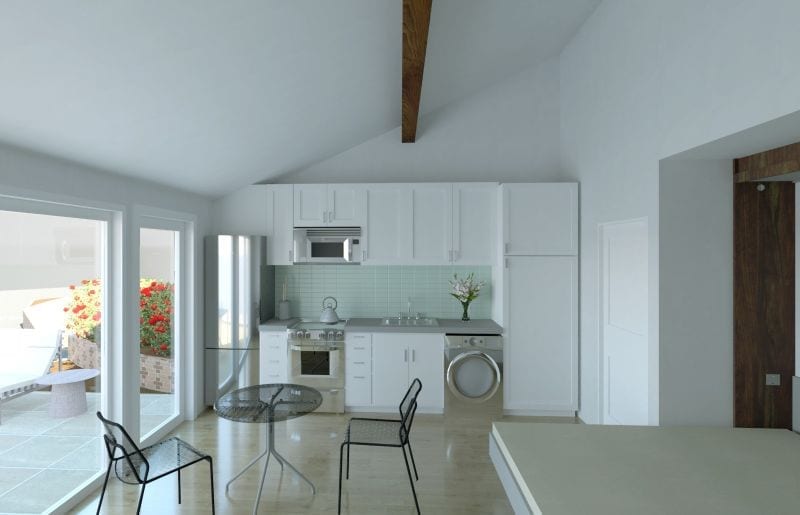
A JADU (junior accessory dwelling unit) is an ADU created out of existing square footage that is part of the primary residence.
In California, JADUs have limitations that ADUs do not. For example, the owner must occupy the main house in order to rent out the JADU. The JADU may be no larger than 500 square feet, and parking may be required depending on your jurisdiction.
These restrictions will apply to anyone who buys your home in the future.
If you’re OK with the JADU restrictions, you can turn your attached garage or other accessory space into a JADU and also build a detached ADU in your backyard. That’s a big plus for homeowners who want to maximize their property’s rental potential. What Is a JADU? will fill you in on the details.
Is it worth it to build an Accessory Dwelling Unit?
After advising thousands of homeowners about ADUs, we’ve found that these flexible little houses serve many purposes over the years.
You may start out using your ADU as a home office and twenty years later end up living in the unit or using it as a home base while you travel the world—on the income you’re getting from renting out your main house!
What is an accessory dwelling unit worth? From ROI to living your dream, here are the possibilities!
A home for your aging parent
As your parents’ age, they may need some assistance. Housing in California is already sky-high and assisted living homes are through the roof. In San Jose, you can expect to pay up to $600,000 over a 10-year period to house your loved one in a nursing home.

In contrast, the added monthly cost to your mortgage for a one- or two-bedroom ADU will be a fraction of the monthly rent at an assisted living home. And it’s adding value to your property.
But there’s more than money at stake. At a nursing home, visiting hours are limited and conditions are uncertain. You want your mom or dad to feel safe, loved, and comfortable—and you want to be nearby to help if they need it!
An accessory dwelling unit can:
- Keep grandparents close to you and the grandkids
- Be built to universal design standards so it’s safe and easy to live in
- House a caretaker if you ever need one
- Be rented for income should your parent eventually need to live somewhere else
Maxable client Janie built a studio ADU for her mother-in-law, who is 97. Janie says:
“She’s very happy to be closer to family. We really can’t believe we waited this long to start this project.”
- Universal design includes wide doors and non-slip surfaces
- Remote-controlled items like blinds and lights give the senior ease of access.
- When Mom is no longer occupying the ADU, Janie and her family can rent it for income: “This ADU has a lot of potential for flexibility, which is really awesome.”
See this beautiful ADU at San Diego ADU Constructed for Aging Family Member.
A home for your college student or recent grad
Young people are casualties of the crazy rents in California. Many live at home while attending college, and many others return home afterward.
An ADU was the ideal solution for Thomas and Kate of San Diego. A Maxable team helped them build a 650 square foot, 2-bedroom ADU over their garage for their son to live in while he establishes himself in the working world.
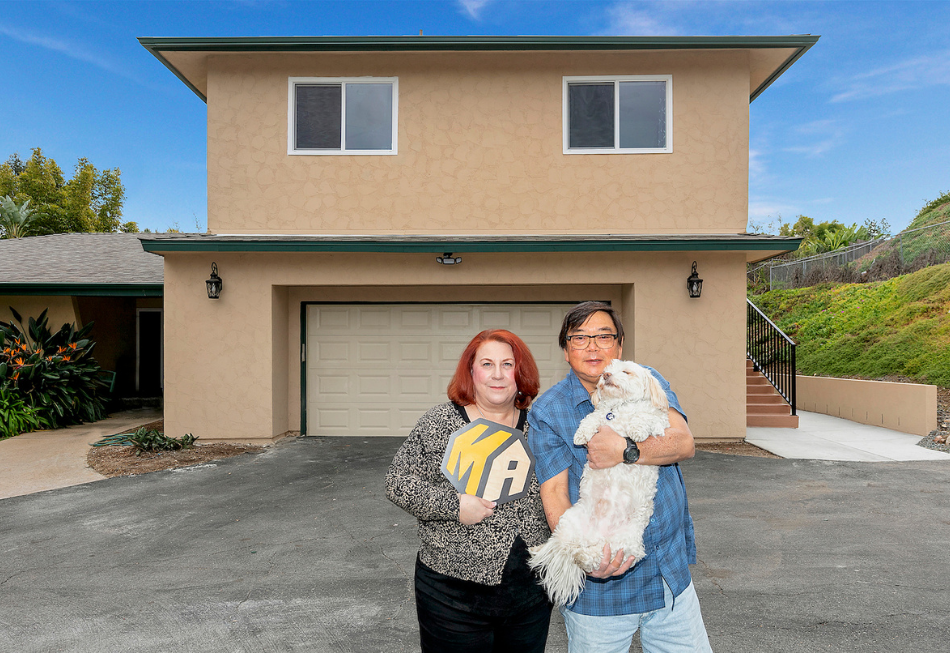
“The cost of housing is prohibitive,” says Kate. “We looked at the difference between the cost of adding an ADU or maybe helping him to buy a condo but there was just no comparison.”
“A custom-built ADU is far superior to a condo,” agrees Thomas. “We love the bathroom. You walk in and angels sing.”
Tour this stunning ADU here. You’ll be able to download the floorplan too.
Income from rent
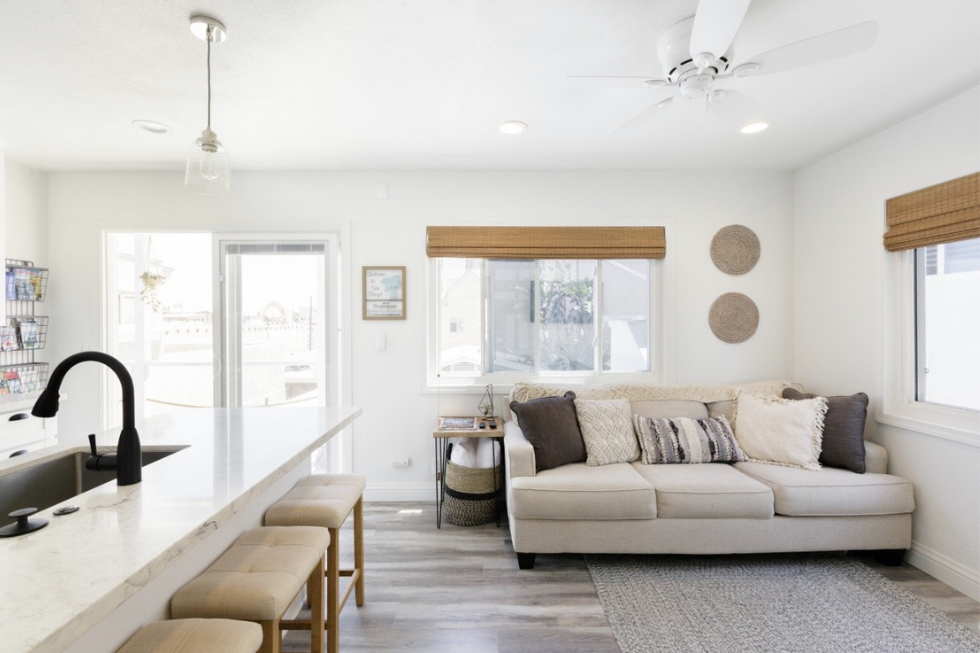
Designed by Haustay
Many homeowners build accessory dwelling units for extra income—and sometimes it’s the key to their buying a home!
That was the story with Mission Beach couple Steven and Kylee. The rent from their above-garage one-bedroom ADU “was essential to us being able to afford to live here,” says Steven. “It’s mostly covered our mortgage.”
“It was a scary risk up front to purchase a house that was probably a little outside our comfort zone,” adds Kylee. “Once it got to the income-producing stage, it was just something we didn’t have to worry about.”
Take a video tour of the couple’s cool and beachy Rockaway House—you can download their floorplan too.
- The average rent for a large 1-bedroom apartment in San Diego: about $2,200.
- Annual income based on this rent: $26,400.
- Rent prices are steadily increasing, which means higher ROI down the road.
You can rent your ADU short-term (for a minimum of 30 days in California) or long-term. If you want to rent to an elderly person or someone else in need, many cities have programs that will guarantee the rent and help you find the right tenant.
Affordable office
As remote work becomes the norm, building an ADU as a home office is smart in every way.
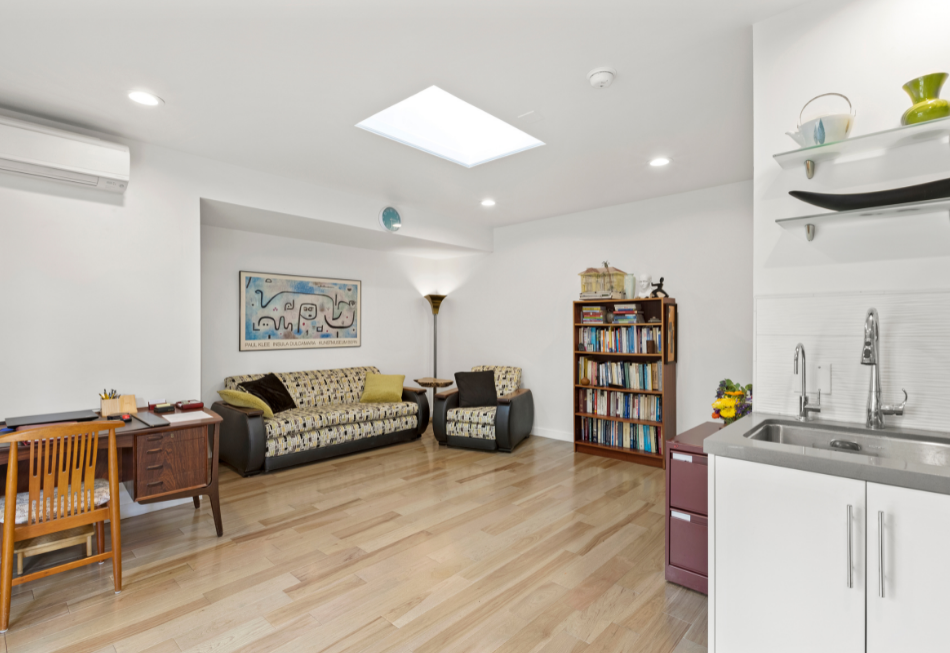
One Los Angeles homeowner had been paying rent on commercial office space for 25 years. Then he decided to build a stand-alone 350 square foot ADU in the backyard to use as his home office.
- Commercial office space cost Walter $3000 a month
- Clients had to find street parking
- Clients park right in front
- When Walter retires, he and his wife can rent the space for income
“My clients love it,” Walter says. “They used to hate searching for parking on the busy street where my office building was. Now they park by the gate, walk through the garden, and they’re here.”
Retirement solution
Maybe you don’t want to sell your house in order to live comfortably in retirement. If you build an ADU you can:
- Live in the ADU and rent out the main house.
- Stay in your familiar neighborhood near your friends.
- Hold onto your property as it continues to increase in value.

Designed by Architect’s Office, Construction by McDunn ADUs
In her 70s and with an itch to travel the world, the owner of this gorgeous ADU achieved her dreams by renting out her main home in Berkeley and using the 437 square foot ADU as a pied-a-terre.
The ADU’s general contractor, Dan McDunn, says:
“I thought this was a brilliant idea and it has been my favorite use of an ADU so far!”
More room for your family
Caught between lack of housing stock, increased prices, and being hit with high property taxes if they trade up, many homeowners are realizing that an ADU can get them the extra space their family needs without moving.
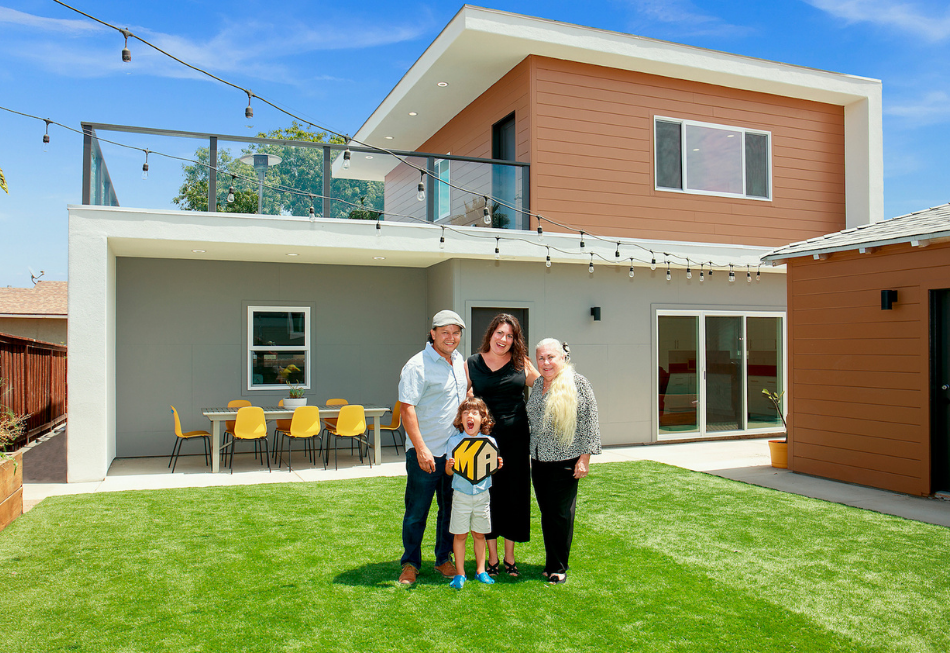
Designed by Maxable, Construction by ADU Builder Pros
Want a place to get away from your teenagers so you can work or entertain friends? Or maybe you’d love someplace to put the teenagers so you can reclaim your living room.
ADUs add flexible space for everyone, and unlike a home addition, an accessory dwelling unit can someday generate rental income.
From Boring Garage to Personal Movie Theater shows how one Los Angeles couple transformed their garage into the ultimate entertainment space!
Increase your property value
In California, it’s hard to name an investment with a better track record than real estate.
- Accessory dwelling units contribute on average between 20% and 35% of each property’s assessed value.
- Real estate agents are highlighting the option to add an ADU as a hot selling point.
- The amount an ADU will add to your property’s value depends on your location and the size and quality of the ADU.

Designed by Kevin Bussett, AIA, Construction by J. Builds Inc
Create a family compound
Want to leave your house to your children and also help them out now? You can build an ADU large enough to turn your property into a true family compound.
Penny and Richard made a promise to their kids that they would always have a home with them if they needed it. That day came when two of the children texted just five minutes apart saying they wanted to move back home.
Thus began the Bay Area couple’s journey with the Maxable team. The end result: a 900 square foot 2-bedroom ADU
Penny tells us:
“A lot of people that have come over and seen it have said, ‘This isn’t an ADU. This is a single-family home.’ We went into this project expecting a tiny house, but there’s nothing tiny about it.”
See this lovely home, download the floor plan, and read about the design/build experience here.
Need help assessing the best ADU for your property? Book a Home Evaluation with one of our ADU experts and get a customized report that will help you decide on the perfect ADU for you.
What is an accessory dwelling unit going to do to your neighborhood? Getting over the fear factor
A while ago we received an email that ended with:
“Telling people this is a great idea is despicable, it is ruining older neighborhoods left and right. Shame on you!”
People and cities are becoming much more welcoming to ADUs, and we expect that trend to continue. But you still may have some reservations, or you may get some side-eye from your neighbors when you mention building an accessory dwelling unit. They just need a little more information.
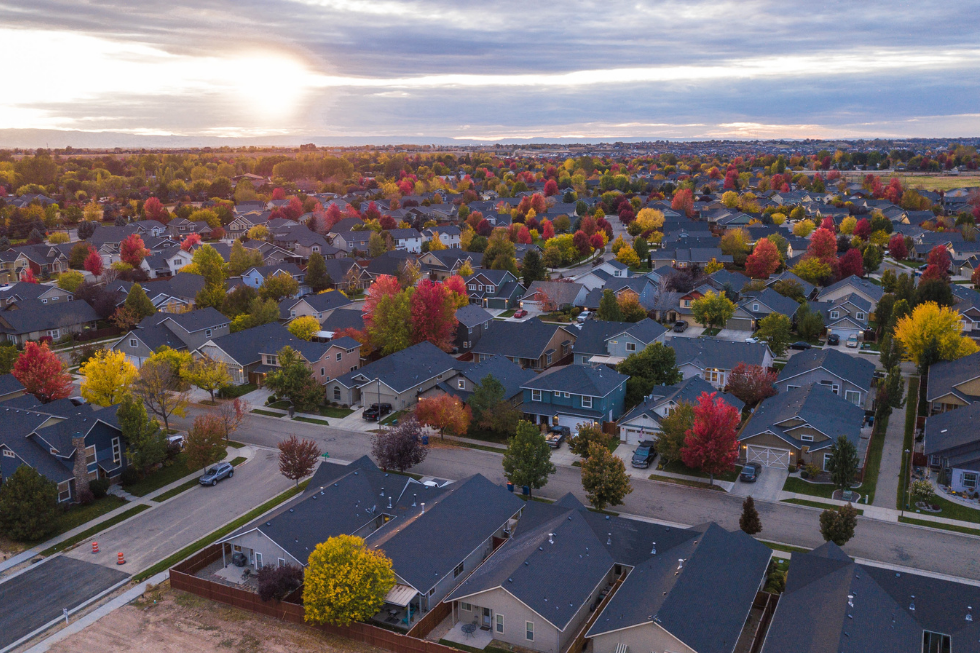
Accessory Dwelling Units provide income and stability to families
With the pandemic, we’ve all seen how the unexpected can derail our lives. ADUs add stability in an uncertain world. Having an added $1,500 of rental income monthly means you can save for retirement or your kid’s college, or afford that surprise vet bill.
Accessory Dwelling Units are environmentally friendly
Accessory dwelling units must comply with 21st-century energy standards, which means they’re probably a lot more efficient than the house you currently live in.
ADUs encourage homeowners to increase invisible density, a term we love. This refers to construction as in-fill, which cuts down on urban sprawl.
ADUs are an alternative to massive, empty houses
The average size home in the United States is 2,600 square feet. That’s a lot of houses, especially considering most people don’t live with extended family anymore and don’t need five bedrooms.
Our society has shifted away from multi-generational living, but our house inventory doesn’t reflect that. ADUs provide a much-needed inventory that supports housing for one and two people.
This also opens up more affordable renting options.

Accessory Dwelling Units offer rental access to great neighborhoods for those who may not be able to otherwise afford it
A single-family home in an expensive neighborhood might be out of budget for most renters, but a smaller 600 square foot unit is within grasp. This gives renters access to neighborhoods and local schools that would otherwise be cost-prohibitive.
Accessory Dwelling Units help solve the housing crisis
Older people are getting priced out of neighborhoods they’ve lived in for decades, and steps should be taken to protect them and others in need of housing. Those who can refinance and build an ADU may be able to stay where they are by renting out either the ADU or the main house.
Accessory dwelling units aren’t the silver bullet that will solve everything, but they’re low-hanging fruit and a big step in the right direction.
For the vast number of families, Maxable has worked with, building an accessory dwelling unit has changed their lives in an undeniably positive way. And when neighbors stop by to look at the finished ADU they inevitably say, “We want one too!”
Can I build an Accessory Dwelling Unit on my property? Regulations in California
What is an accessory dwelling unit going to require in terms of building permits and regulations? In 2020 California radically expanded the options for homeowners.

The most important new rules:
Size
- You can build one attached or detached accessory dwelling unit on a property with a single-family home.
- The ADU is allowed to be a maximum of at least 850 square feet if it has one bedroom, and 1000 square feet if it has two or more bedrooms.
- Cities can allow up to 1200 square feet without an ordinance, or more if they pass an ordinance specifying a larger size.
- You can convert accessory space in your house to a 500 square foot JADU in addition to building an ADU.
Property setbacks
- ADUs must have a four-foot setback from your rear and side property lines.
- ADUs converted from garages are allowed to stay where they are, even if it’s on the property line. Extensions to the garage must have 4-foot rear and side setbacks.
Parking
- No parking is required for the ADU if the unit is within ½ mile from public transportation, a block from a ride-share car, on in a historically or architecturally significant district. (There are a few other parking exemptions as well.)
- Converting a garage to an ADU cannot trigger the requirement for replacement parking for the main house.
Impact Fees and owner-occupancy Waiver
- No development and impact fees for ADUs of less than 750 square feet.
- If your ADU plans are approved before Jan. 1, 2025, the city cannot require you (the owner) to live in either of the homes—you can rent out both the main house and the ADU.
Accessory Dwelling Units on properties with multi-family residences
- “Multi-family” is defined as two or more residences that are structurally attached to one another.
- Your city may allow you to build up to two detached ADUs or one or more ADUs converted from existing accessory space. It may allow you to do both.
- Call your local Department of Building and Safety to find out if your city has an ADU ordinance, and review your options.
- For more info, see How to Maximize Multi-Family ADUs.

Other 2020 Accessory Dwelling Unit Regulations
There are many more parts of the law your designer should know about when planning your ADU. Your city can pass an ordinance that limits or expands some of your options.
For instance, the city may impose an ADU height limit of 16 feet (one story). Or it may allow you to build two stories.
You can learn the full scope of the new laws in California’s Accessory Dwelling Unit Handbook. It’s often updated because the regulations continue to be refined.
How much does an Accessory Dwelling Unit cost?
You’re probably wondering: “What is an accessory dwelling unit going to do to my wallet? Can I afford this?”
As you consider funding options, remember ROI: In nearly any part of California, if you plan to rent out your ADU, the cash you generate will likely be greater than the cost added to your mortgage payment because of a construction loan. That means positive cash flow as soon as you start renting out the unit.
In Southern California, the cost of the least expensive type of ADU, a garage conversion, begins at around $95,000. In the Bay Area, it’s $130,000. The difference is largely due to the cost and availability of labor.
Keep in mind:
- The cost per square foot for an ADU goes down as the square footage goes up.
- You’re paying for all the infrastructure of a larger home (like plumbing, heating, bath, and kitchen) without nearly as much “cheap” square footage (bedrooms, halls, big living rooms) to offset the price per square foot.
- There are fixed costs associated with permitting and design fees.
- Margins are smaller for general contractors, subs, and architects, so they charge more per square foot compared to larger homes.

The design itself is only about 6% of the overall cost to build an ADU. Permits are usually much less than that. Construction is where most of your money will go.
Construction includes:
- Raw materials. The prices, especially lumber, fluctuate a lot.
- Utilities (gas, electric, plumbing) and their installation
- Roofing
- Finishes (paint, tile, flooring, etc.)
- Landscaping and hardscaping
For more information, download our free cost estimator here. Click here for details about building in your particular city.
Converting a garage is a very popular option, so we put together more info on What Does a Garage Conversion Cost?
The state of California wants you to build an ADU! Call Maxable to get connected with a vetted lender who’s knowledgeable about all your financing options.
Can I convert an illegal guest house to a legal Accessory Dwelling Unit?
There are hundreds of thousands of unpermitted ADUs in California. Many homeowners are afraid that if they try to legalize such a unit the city will force them to tear the whole thing down.
It rarely happens! The guiding principle behind legalizing is that whatever is there must be brought up to code or returned to its original state when it was permitted.
For instance, you may have a window that does not meet today’s building and safety standards. You’ll need to either replace it with one that does or remove the window and return that wall to its original state.
Fortunately, California requires local agencies to delay enforcement against a qualifying substandard ADU for five years in order to give you time to correct the violation, as long as the violation is not a health and safety issue.
The steps for legalizing an illegal ADU aren’t all that different from the normal design/permit/ build process. You can find a detailed explanation at 5 Steps to Legalizing Your Granny Flat.
Does my Accessory Dwelling Unit have to be permitted?
Yes. You will need an architectural design that is approved by the city, as well as city-issued building permits.
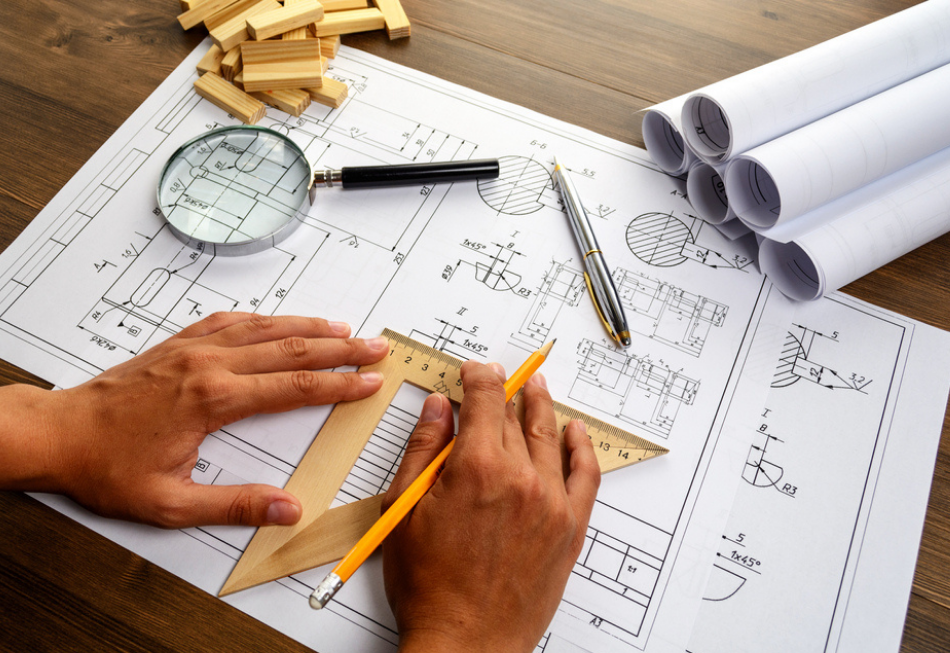
What makes an Accessory Dwelling Unit illegal?
Accessory dwelling units must meet your city’s building and safety codes for habitable spaces. Legal ADUs have been issued a Certificate of Occupancy by the city. If your ADU does not have that certificate, it is not a legally permitted ADU.
Does an Accessory Dwelling Unit need a kitchen?
Yes. Your accessory dwelling unit must have a kitchen and a bathroom with a shower or tub.

What’s Next?
Before you jump into your project, keep in mind that it can be a long process. Luckily, Maxable can help you the whole way through.
Step 1: Define what it is you want for your Accessory Dwelling Unit
Here are just a few questions you should ask yourself:
- What will you use your ADU for?
- Who will be living there?
- What special amenities do you/they need?
- What details are you willing to sacrifice?
- How much are you willing to spend?
This is YOUR project. As long as you follow state and local regulations, you can design this unit any way you want. Take notes about your plans and desires for the ADU so you can explain them to your ADU expert, which leads us to the next step.

Step 2: Book a Site Evaluation
One of our ADU experts will conduct thorough research pertaining to your property and the possibilities for your ADU. We’ll set an appointment for a full hour where we’ll share our findings and you can ask your expert anything you’d like.
Along with your reports, you’ll also receive personalized referrals to vetted ADU designers and general contractors in our network.
Step 3: Work with your professionals
Once you’ve put together your team of ADU professionals, you’re ready to start drafting your design and get your permits!
This can be daunting, but remember that the Maxable team is there with you every step of the way, even when your Site Evaluation appointment is over.
Our designers are deeply knowledgeable about the ADU regulations and will deal with the city during the permitting process. We often know the regulations better than the folks at the planning department, and we can diplomatically educate them so your project moves along smoothly.
Maxable is California’s ADU Marketplace. After writing state laws, educating thousands of homeowners, and completing hundreds of site evaluations and ADU projects, we know accessory dwelling units better than anyone else.
We’ll do the research on your property and assemble the perfect ADU team, customized for you. When you’re ready to take the next step, book a free ADU Planning Phone Call. Talk to you soon!


